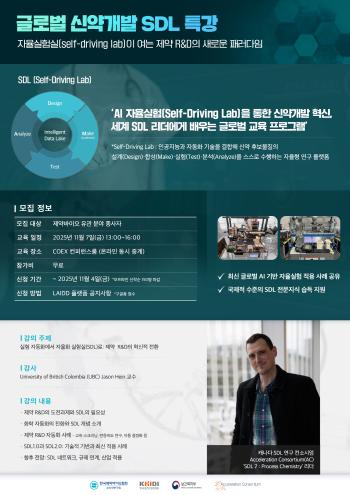Running is the trend these days... Hip joint collapsed while running, 3 major diseases
Jun 06, 2025
|
Although there is often high alertness to ankle or knee injuries in relation to running, it is not well known that hip joints can also be damaged by repeated impacts. In particular, the hip joint can quietly collapse due to fewer outward symptoms, which can reduce the joy of running to 'Runner's Die' rather than 'Runner's High'.
In fact, it has been reported that a runner who enjoyed long-distance running was diagnosed with hip mucocystitis and stopped exercising for a long time, or even underwent artificial joint surgery due to bloodless necrosis of the femoral head due to excessive running. Now, as 'Exercise also requires prescriptions', preliminary checks and proper running habits to protect hip health are becoming more important than anything else. With the help of Kim Sang-min, a professor of orthopedic surgery at Guro Hospital of Korea University, we summarized the hip diseases that can occur after running.
◇Repeated impact, 'Quiet injury' causing hip joint
Learning is an exercise that anyone can easily start, but repeated shocks and incorrect postures put more pressure on the joints than expected. Most focus only on ankle or knee injuries, but the hip joint, which connects the upper and lower body at the center of the body and supports the weight, is also at great risk. When running, a load several times the weight is transmitted to the hip joint, and if this impact accumulates, it can lead to various diseases such as inflammation, cartilage damage, and fractures. In particular, imbalances in pelvis and surrounding muscles, differences in leg length, and incorrect landing habits put abnormal pressure on the hip joint, increasing the likelihood of injury.
The problem is that the hip joint is the area of 'quiet injury'. Since it is located in a deep structure that is not exposed, it is easy to mistake it for back or hip pain in the early stages even if damage occurs, and self-awareness symptoms often appear late. If pain is left unattended, microscopic inflammation gradually progresses, causing cartilage to be damaged, and in severe cases, necrosis of the bones can occur. Since the hip joint is an area that takes a long time to recover or can lead to surgery once damaged, quick diagnosis and action are of paramount importance if abnormal signs are felt during running.
◇Three representative hip joint diseases that runners should watch out for.
The most common condition among hip injuries caused by running is hip mucocystitis. The mucous sac, mainly located outside the hip, causes inflammation through repeated friction and compression, and is characterized by severe pain when climbing stairs or lying on the side. Another condition is hip stress fracture, which causes a fine crack in the bone due to excessive mileage or sudden increase in exercise. In the beginning, it is easy to leave it because it feels like simple muscle pain, but fractures can progress if you continue to run without proper treatment. A more serious case is bloodless necrosis of the femoral head, a disease in which bone necrosis occurs due to poor blood supply to the hip joint. Pain appears in the deep groin area during exercise, and if it progresses, it affects walking and may require artificial joint replacement.
Treatment of these hip diseases is mostly initially approached in a conservative way. Medication, physical therapy, and rest are combined to relieve inflammation and reduce the burden on joints. Mucocystitis or stress fractures can be recovered relatively quickly if detected early, but if the pain persists or symptoms worsen, steroid injections or surgical treatment may be required along with precise evaluation through imaging (MRI, CT, etc.). In particular, if structural damage has progressed, such as femoral head bloodless necrosis, early diagnosis and active treatment determine the prognosis, so you must seek medical attention rather than passing over hip pain to simple muscle pain.
◇ How to determine whether to exercise in case of hip pain
If you have pain in your hip joint while running, it is often confusing whether you can continue exercising or take a break. Usually, exercise can be distinguished according to the location, intensity, and duration of the pain, but it is most important to listen to the judgment of a specialist for that part.
If pain occurs when moving, but disappears when resting, it can be managed by light stretching and adjusting the intensity of exercise. However, if the pain gradually intensifies, the pain persists even if you do not exercise, and if you are uncomfortable with your daily life, it is important to stop exercising and visit a hospital for consultation with a specialist.
It is most important not to overdo it because once the hip joint is broken, it is not easy to recover. In particular, if it is limited to one side and repeated rather than both hip pain, there is a high possibility that there is a more serious cause. Temporary suspension of exercise with early diagnosis is the best option to prevent injury and enjoy exercise for a long time.
◇The right running habit to avoid the 'runners die'
Hip injuries mostly start with wrong running habits. Excessive driving distance, sudden increase in strength, incorrect posture, and unbalanced muscle conditions cause constant stress on the hip joint and cause damage. In order to prevent this, it is important to plan and implement exercise that suits you, such as sufficient warm-up, stretching, and adjusting the intensity of exercise suitable for your personal physical strength. In addition, it is helpful to relax the muscles around the hip joint sufficiently before running, and to combine cold compress and stretching for recovery after running.
In particular, shoe selection is an important factor. It is recommended to use cushioning shoes with good shock absorption and avoid places with uneven or severe slopes.
Professor Kim Sang-min said "If you feel hip pain while running, you should stop exercising immediately and observe the progress without running too hard. Repeated pain or discomfort may be an early sign of hip joint disease, not just muscle pain, so it is the first step to protecting the `Runners High' to seek medical attention from an orthopedic surgeon without leaving it unattended.
|
This article was translated by Naver AI translator.















